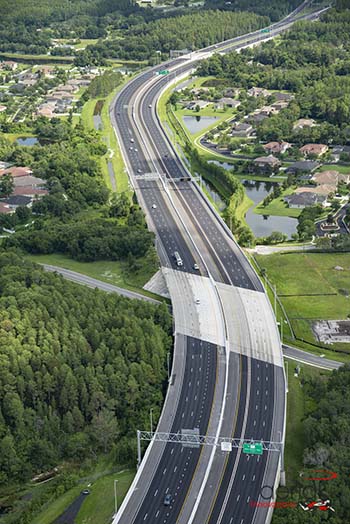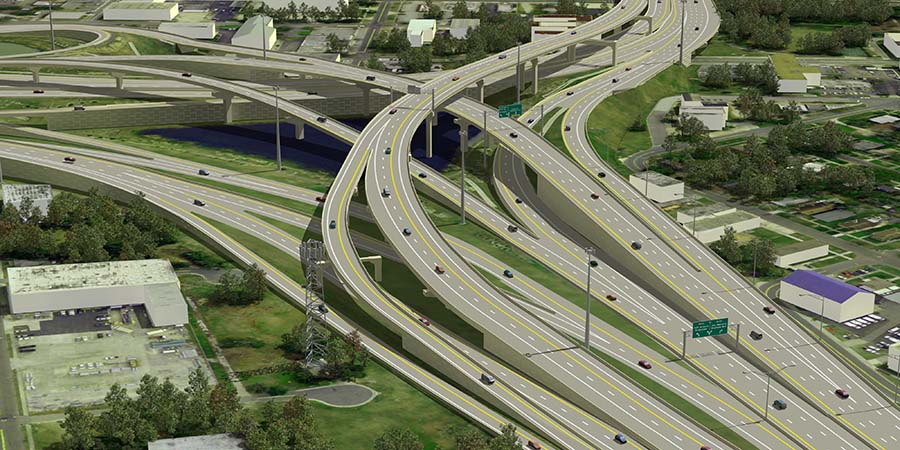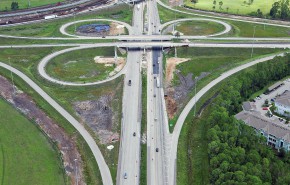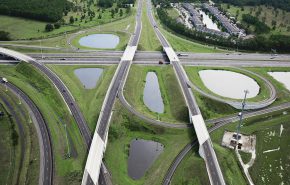GAI Assistant VP Steve Boylan, PE shares strategies for keeping design-build projects on time and on budget.
Design-build is a unique contract delivery method and requires a far different approach than a conventional design project. While each project is unique, there are common considerations that drive the success of often large design-build contracts.
- Build the Right Team for the Project
Each engineering firm has its own specialties, and our contracting partners also have theirs. Sophisticated, national (or international) construction corporations will generally be more competitive on high-profile, complex jobs compared to smaller projects that are best managed by local contractors.

- Build on Relationships
Having an established relationship with your contractor—or, more importantly, individuals within the contractor’s company—will always make the job more successful. The design-build process has inherent risks, and each project will experience challenges along the way that affect costs and/or schedule. Being able to work together with the contractor is the only way to surmount these hurdles with the least impact to the project and the respective companies.The team must also be selected based upon client relationships, where the reputations of each partner are well established with the project’s owner. This will not only help the team score well in the proposal phase, but it will also provide a basis for managing pressures placed on the project team. - Choose the Right Project Manager
From the engineer’s perspective, the Design Project Manager is the single most important decision that can influence success. The project manager must:- Understand the structure of a design-build project, where the contractor is the client. Our conventional contracts are built around providing significant plan details, protecting the owner against claims, and making sure the project is constructible by various means. In the case of design-build, the design is tailored to the contractor’s chosen method of building the job.
- Understand the contract, which is the “bible” of the project. Most of our kind have built careers on serving and meeting the needs of our clients, which more often than not are the government agencies that own the facilities. As projects mature, we are often asked to expand upon project elements or add small scope items. In the case of design-build, we are 100-percent governed by the contract. Changes due to preferences or items added through the normal progress of design can have real construction cost impacts. These items must be immediately identified and elevated to the contractor to render decisions on how to proceed.
- Understand the risks associated with design-build and identify them early on during preparation of the bid. A good Project Manager will maintain a list of items that could be stumbling blocks during development of the project or areas where uncertainties lie. Good examples of these are unforeseen geotechnical issues, potential utility conflicts, and permitting. Quantities are, obviously, another area where it is important to understand how precise and accurate we are. Communicating that to the contractor is vital as they prepare their bids.
- Communicate, Communicate, Communicate. The fast paced, multidisciplinary aspects of design-build projects leave little time for re-work or miscommunication. Regular, well-structured meetings and direct interaction among the entire team helps avoid pitfalls—recognizing that a small change to one project element can domino into other design areas, and even to work in the field itself.
- Prioritize Responsiveness. As alluded to many times in this discussion, “time is money” in design-build. When questions arise or issues are discovered in the field, the Project Manager must respond immediately, querying members of the team and mobilizing to develop solutions. Nothing can be a bigger motivator than dormant workers in the field waiting for answers to come from the other end of the phone.
Design-build is an effective, innovative means of project delivery, and is often the chosen method by owners in order to innovate and to expand the value of their precious dollars.
- Live and Die by the Schedule
A key part of developing the bid for a project is in properly estimating the time to complete. The contractor weighs production rates, availability of staff and materials, and, most importantly, managing the critical path elements. Design—as the first step in every design-build project—always lies on the critical path, and delays by even a day can have serious consequences to overall time and cost. With the contractor’s overhead costs often exceeding $10,000 per day, it’s easy to see the impact that missing the design schedule can have. The engineer’s goal is to reduce the amount of time we lie on that critical path. This can be accomplished by developing component sets (such as clearing and grubbing and rough grading plans) that allow the contractor to mobilize and begin the construction-critical path while design is on-going. Collaboration on the schedule between design and construction must take place early and often between the contracting and engineering partners in order to adjust for unforeseen changes and site conditions. - Understand Every Element of the Project
It’s a lesson we’ve all learned early on, dating back to elementary school: do your homework. This helps not only in winning the project, but also allows the team to identify and get ahead of issues that could affect schedule or costs. - Know When to Stop Designing
In design-build, schedule is king. While there are always opportunities to optimize designs and make things better, design-build must always focus where the rubber hits the road: the “build” part. Time spent trying to save thousands of dollars through refined designs is more often than not offset by tens of thousands of dollars in lost time in the field (not to mention the cost expended through re-design).

Design-build is an effective, innovative means of project delivery, and is often the chosen method by owners in order to innovate and to expand the value of their precious dollars. An intelligent approach to teaming and managing these projects is the key to success and profitability for all partners.
Find out more—read Steve Boylan’s previous article on this topic:
![]() Steve Boylan, PE has extensive experience in design and project management, specializing in the design of major limited access and arterial roadway reconstruction, roadway rehabilitation, and elements of traffic design. He has managed projects throughout Florida ranging from small, meaningful safety improvements to high-density, high impact urban reconstruction projects.
Steve Boylan, PE has extensive experience in design and project management, specializing in the design of major limited access and arterial roadway reconstruction, roadway rehabilitation, and elements of traffic design. He has managed projects throughout Florida ranging from small, meaningful safety improvements to high-density, high impact urban reconstruction projects.
For more information about GAI’s design-build services, projects, and trends, contact Vice President Kevin Leadbetter, PE at 904.559.8087 or Assistant Vice President Steve Boylan, PE, at 321.354.5661.


